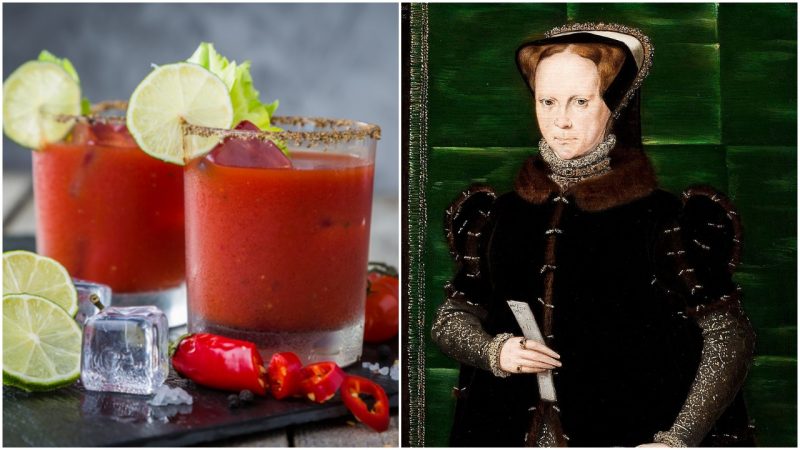Bloody Mary is the name of a drink that contains booze and tomato juice and a dash of Worcestershire sauce, cayenne pepper, lemon, salt, black pepper, and a vigorous celery stalk. In 1939, the newspaper This New York reported breathlessly, “George Jessel’s newest pick-me-up that is receiving attention from the town’s paragraphers is called a Bloody Mary: half tomato juice, half vodka.”
Bloody Mary is also the name of a macabre children’s game. Find a mirror, turn out the lights, and call out her name three times. When you switch on the light, Bloody Mary herself will appear in the mirror—the ghost of a woman wrongly accused of killing her own children.
And, most significantly, Bloody Mary is the moniker for Mary Tudor, the oldest child of Henry VIII. At the age of 37, she courageously took the throne by force after her half-brother Edward altered the act of succession. Young Edward wanted his Protestant cousin, Lady Jane Grey, to follow him, not his Catholic sister. But Mary raised an army and overthrew Jane’s fragile government.

Today Mary I’s five-year reign is not considered a success. She married a Hapsburg prince—the marriage was very unpopular—and had a phantom pregnancy (maybe two). England experienced bad harvests every year during her reign. A war with France ended in disaster: the loss of Calais.
In her zealousness to turn England back into a Catholic country, Mary authorized her government to persecute Protestants who would not conform and 284 were burned at the stake. While far more than 300 Catholic martyrs died during the reigns of Henry VIII and Elizabeth I, Mary is the one who carries the reputation of being a merciless, bigotry-filled killer.
How that reputation evolved, the one that has named her “Bloody Mary,” is startling.
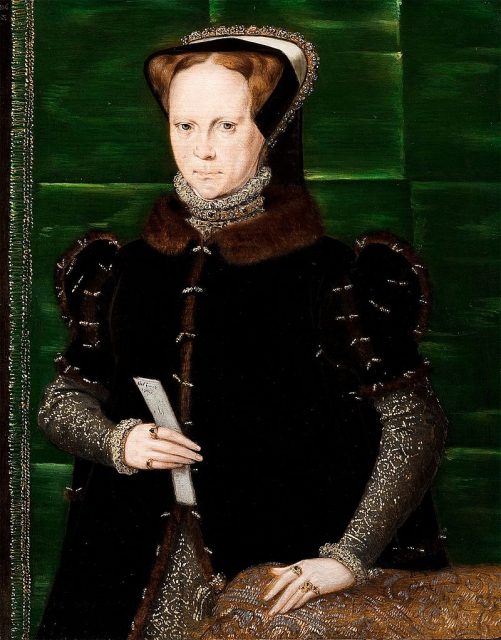
Mary Tudor was a woman of her time. While that may seem obvious, she was followed by a half-sister who was in some ways ahead of her time. Mary took a husband to secure the succession by having children, as every monarch was expected to do. Elizabeth refused to marry. Mary and Elizabeth, while close when young, distrusted each other by the time Mary took the throne. The relationship went downhill from there. A rebellion against Mary led by Sir Thomas Wyatt planned to put Elizabeth on the throne, and after it was squelched, the Queen sent her half-sister to the Tower of London. Elizabeth spent the rest of the reign either imprisoned or under something approaching house arrest.
When Elizabeth succeeded as called for in the will of Henry VIII, she did not honor Mary’s request to be buried with her mother, Katherine of Aragon, and rarely spoke well of her older sibling.
But it wasn’t Elizabeth who ensured that Mary would be detested for centuries. The first person to push her toward infamy—and very hard—was John Foxe, the Protestant author of The Book of Martyrs. Most English people did not personally witness the burnings of condemned heretics. But thanks to Foxe’s widespread book, first published in 1563, five years after Queen Mary died, the horror of being burned at the stake was made starkly clear. These descriptions make for harrowing reading, then and now.vv
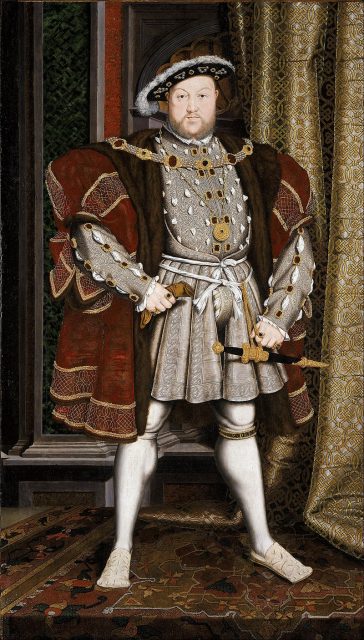
It was Foxe who may have coined the expression when he wrote, “The next victim was the amiable Lady Jane Gray, who, by her acceptance of the crown at the earnest solicitations of her friends, incurred the implacable resentment of the bloody Mary.” But the nickname did not take hold then—in fact, it did not spring up until a century later.
The succession crisis over James, Duke of York, directly led to the vilification of Mary Tudor. Fear that James, who had converted to Catholicism, would succeed his brother, Charles II, gripped much of England. Should a Catholic become king, one politician warned, the kingdom would see persecutions as “bloody or bloodier than the ones in Mary’s reign.” An anonymous ballad in 1674 declared that after Edward VI died “Then Bloody Mary did begin/in England for to tyrannize.” She was used as a threatening memory of tyranny and death and slavish devotion to the Pope.
This was the genesis of Bloody Mary.
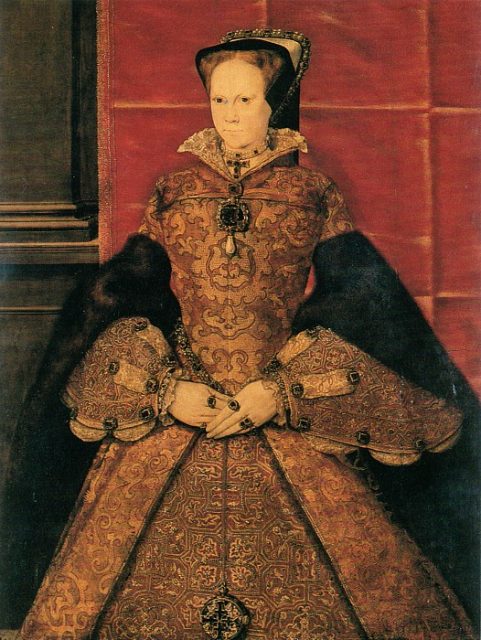
The revolution of 1688 put a Protestant on the throne and the Act of Union in 1707 ensured that a Catholic could never rule England. But paranoia about Jacobite risings led to more and more denunciations of Mary I. She became the specter of an invasion led by a Catholic prince, backed by Catholic France and the Pope himself.
Today historians agree that, no matter what one thinks of her later reign, Mary was an attractive young woman, well educated and exceptionally talented in music. She loved fine clothes, jewelry and gambling. She was a devoted godmother and generous friend right up until her death. But in the lowest point of Mary’s historical reputation she was depicted as not only bloodthirsty and tyrannical but also stupid and deeply hideous.
Here is how an 18th century historian describes the Tudor queen: “Mary was not formed to please, she had nothing of the woman in either her history or her behavior; she was stiff, formal, reserved, sour, haughty and arrogant, her face plain and coarse, without any soft features to smooth its roughness or any insinuating graces to shade its defects. Everything in her looks, her air, her carriage and manner, was forbidding…scarce ever was there a person so utterly void of all the agreeable qualities.”
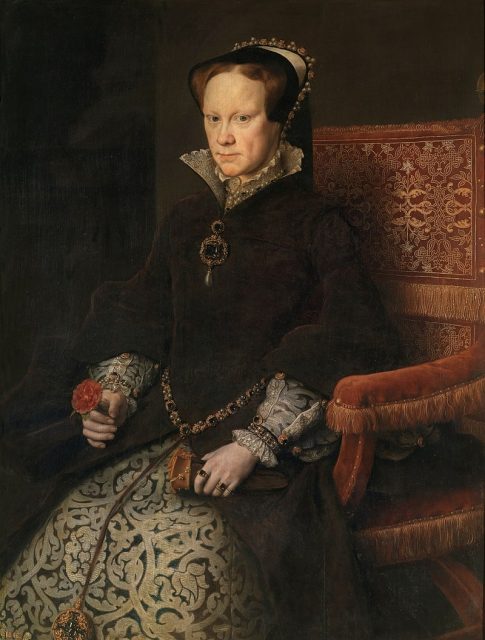
A century later, no less a figure than Charles Dickens attacked Mary with ferocity. In A Child’s History of England, Dickens ranted: “As BLOODY QUEEN MARY, this woman has become famous, and as BLOODY QUEEN MARY she will ever be justly remembered with horror and detestation in Great Britain.”
It is not until fairly recently that attempts have been made to draw a more balanced portrait of Mary. In the book Mary Tudor: Old and New Perspectives a collection of scholars’ essays was published. On the first page, the editors say, the purpose of the book is to reveal an “educated, resourceful and pragmatic queen.”
One of the essays takes on the issue of the martyrs: “The burning of 284 religious dissidents is morally unjustifiable from a twenty-first-century perspective. It is important to remember, however, that the values of the 21st century are not the values of the 16th century, and that in the 16th century the execution of obstinate heretics was almost universally regarded as a necessary duty of a Christian ruler.”
No matter what historians write now, however, the chances are that the nickname “Bloody Mary” will never be retired.
Nancy Bilyeau, the U.S. editor of The Vintage News, has written a trilogy of novels set in the court of Henry VIII: ‘The Crown,’ ‘The Chalice,’ and ‘The Tapestry.’ The books are for sale in the U.S., the U.K., and seven other countries. For more information, go to www.nancybilyeau.com.
